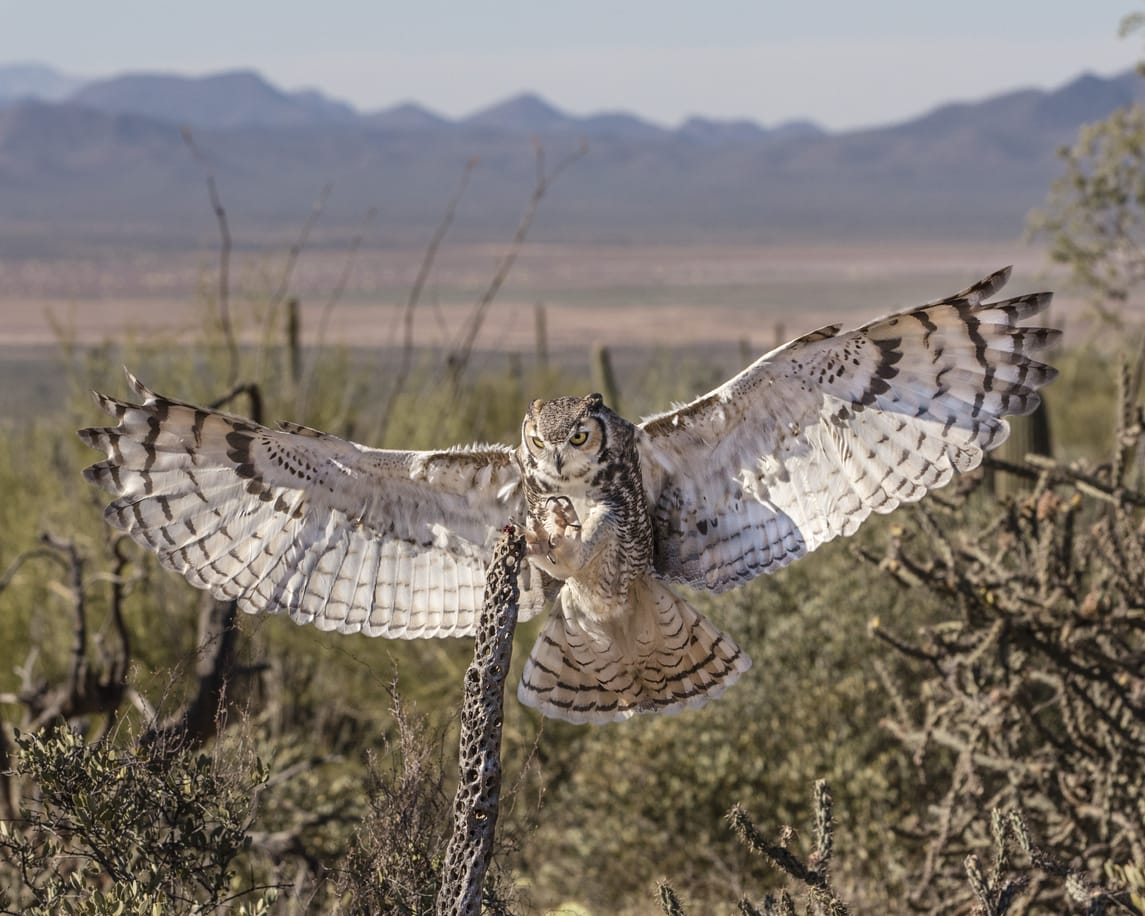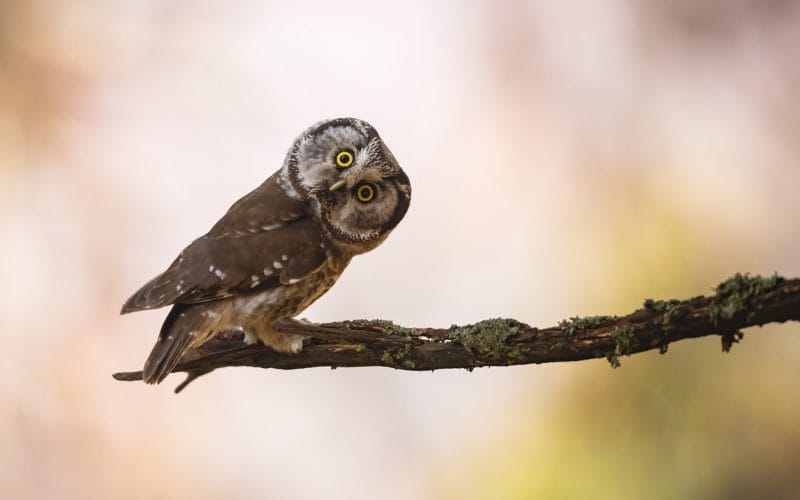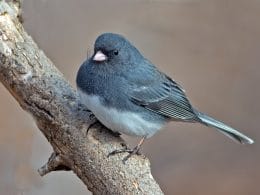Known for its barbeques, botanical gardens, and museums, Missouri is filled to the brim with wonder and history.
But the Show-Me State isn’t all about tall buildings and historical sites; with its diverse terrain and strategic location, it’s home to over 430 species of birds. Among them are eight owls, including the iconic Great Horned Owl and the rare Snowy Owl.
In this article, we’ve listed all eight owls in Missouri, including individual characteristics and when and where to find them.
1. Great Horned Owl
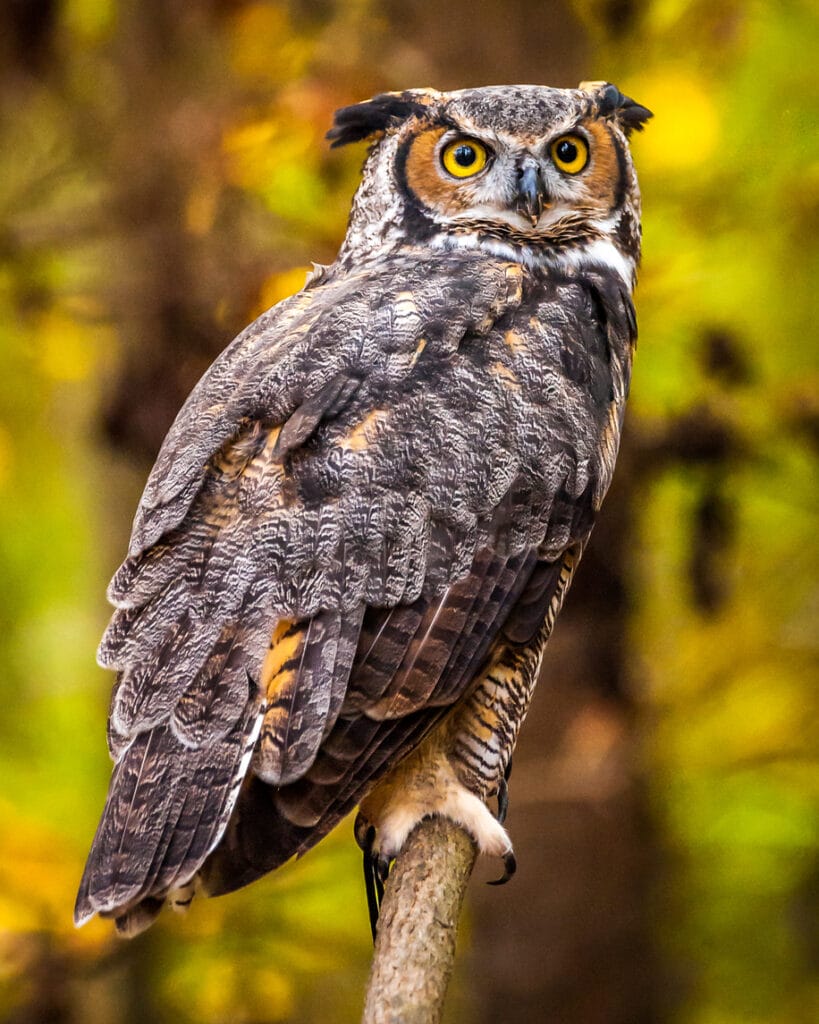
- Scientific name: Bubo virginianus
- Length: 18 to 26 inches
- Wingspan: 55.5 inches
- Weight: 50 ounces
- Lifespan: 10 to 15 years (wild); 28 years (oldest recorded)
Great Horned Owls are among the most iconic owls not only in North America but across the world. With their all-knowing eyes and deep hoots, they’re the “go-to” owl in children’s books, TV shows, and movies.
In Missouri, Great Horned Owls are year-round residents. They usually gravitate towards secondary-growth woodlands and deciduous forests, but they can also be spotted in urban and suburban areas such as parks and cities.
Top Tip: As the name suggests, Great Horned Owls have horn-like ear tufts on their heads. They have mottled gray and brown bodies, large, cat-like yellow eyes, reddish-brown faces, and a signature white patch on their throats.
These wise owls are one of the most feared predators in the animal world. They aren’t picky eaters and would eat anything they can get their claws on. In fact, they’re the only known bird of prey that regularly kill and eat skunks, unbothered by their self-defense mechanism.
Although Great Horned Owls can take on prey much larger than them, they usually stick to small mammals, rodents, and amphibians. They have a particular taste for rats, rabbits, opossums, and squirrels, but they won’t say no to snakes, frogs, and scorpions.
They eat fish, too, but only when absolutely necessary.
2. Long-eared Owl

- Scientific name: Asio otus
- Length: 13.5 to 15.7 inches
- Wingspan: 35 to 40 inches
- Weight: 8 to 9 ounces
- Lifespan: 10 to 11 years (wild); 27 years (oldest recorded)
Long-eared Owls are among the rarest owls in Missouri. Not only are they highly secretive, roosting together in dense groves of pine, but they also only visit the state from mid-November to Mid-April. Their camouflage black, brown, and buff patterning makes them even harder to spot.
Named for their long ear tufts, Long-eared Owls are the most melodic of owls. They produce over 200 different sounds, including hoots, whistles, screeches, cat-like meows, and even barks. The booming calls of male Long-eared Owls can be heard a mile away, making them one of the more interesting owl species to study.
Long-eared Owls have pale ochre-tawny facial discs that are lined with a blackish rim. Their “eyebrows” are short and whitish, and their eyes are yellowish-orange.
Some people mistake Long-eared Owls for Great Horned Owls even though they look nothing alike. For one, Long-eared Owls are much smaller than Great Horned Owls, thus the unofficial title, “Lesser Horned Owls.” They’re also slimmer and far more delicate-looking.
Like most owls, Long-eared Owls eat local rodents. This includes voles, pocket gophers, kangaroo rats, and deer mice. They also occasionally eat bats, snakes, lizards, small birds, and other small creatures.
3. Short-eared Owl
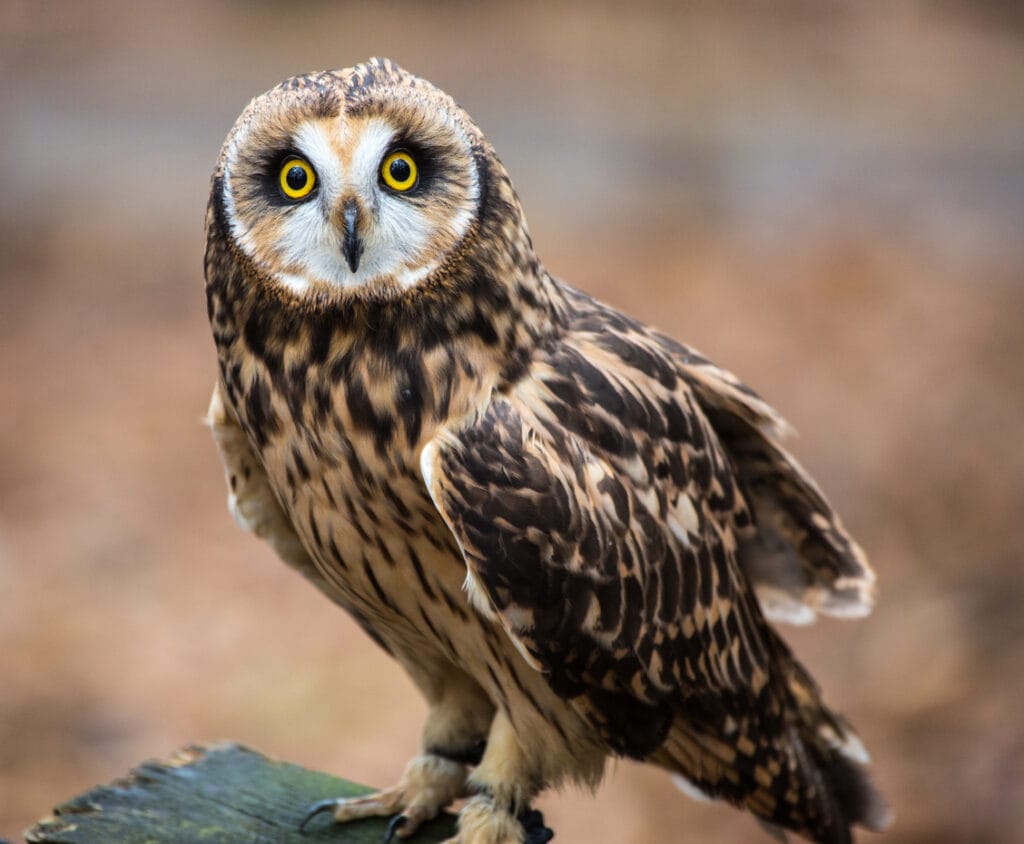
- Scientific Name: Asio flammeus
- Length: 12 to 18 inches
- Wingspan: 33.5 to 40.5 inches
- Weight: 7.3 to 16.8 ounces
- Lifespan: 4 to 5 years (wild); 12 years (oldest recorded)
Like Long-eared Owls, Short-eared Owls are named for their practically nonexistent ear tufts. Their ear tufts usually lie flat on their heads unless they’re startled or want to intimidate a creature.
Short-eared Owls have flame-colored plumage of red, brown, and white, hence the scientific name flammeus. They have pale, disc-shaped faces, black-rimmed yellow eyes, and a buff patch on the outer part of their wings.
Although found year-round in the northern parts of Missouri, Short-eared Owls are a Species of Conservation Concern in the state. Their numbers have been steadily declining over the years, primarily due to the fragmentation and destruction of their habitats.
In Missouri, Short-eared Owls can be spotted in Glaciated Plains, Mississippi Lowlands, Osage Plains. With enough luck, you might discover a roost of up to 20 or more Short-eared Owls in a thicket, ravine, or atop large hay bales. You might also find them roosting in a dry, grassy watercourse.
Unlike most owls, Short-eared Owls are diurnal, meaning they hunt during dawn and dusk instead of night.
But their uniqueness doesn’t end there. Female Short-eared Owls are the only owls that build their nests on the ground. They also nest on reclaimed and replanted mines, making them one of the few creatures that actually benefit from strip mining.
The calls of Short-eared Owls consist of a variety of squeaks, hoots, hissing sounds, and barks (like that of a small dog). They’re usually silent, though, making them difficult to spot.
4. Barn Owl

- Scientific name: Tyto alba
- Length: 12.5 to 15.9 inches
- Wingspan: 39.5 to 49.5 inches
- Weight: 14 to 24.7 ounces
- Lifespan: 2 to 4 years (wild); 15.4 years (oldest recorded)
Barn Owls are found year-round in Missouri, living in abandoned barns, church steeples, chimneys, and other man-made structures.
Author Note: Among the six owl species that live year-round in Missouri, Barn Owls are perhaps the rarest.
Like Short-eared Owls, they’re a Species of Conservation Concern and are protected under the Migratory Bird Treaty Act. This means that it’s illegal to harm, handle, or harass these owls and their nests.
Unfortunately, even with the law in place, Barn Owl populations have declined in the state due to agricultural practices, habitat loss, and illegal shooting—perhaps because some people think they’re evil omens.
Barn Owls are some of the more unique creatures in the world. Depending on who you ask, they’re either beautiful or unsettling. They have a somewhat “ghostly” appearance, with their black, forward-facing eyes, cryptically colored plumage, and pale heart-shaped faces.
When night falls, they appear as a flash of white. They’re a true nocturnal species, meaning they hunt only at night. They’re extremely adept in hunting rodents, so farmers and homeowners would often set up nest boxes to encourage them to hunt on their property.
5. Northern Saw-whet Owl

- Scientific name: Aegolius acadicus
- Length: 6 to 8.5 inches
- Wingspan: 16 to 22 inches
- Weight: 2 to 5.5 ounces
- Lifespan: 7 years (wild); 9 years (oldest recorded)
Northern Saw-whet Owls are winter residents in the northern parts of Missouri, and live year-round in the rest of the state.
At a maximum height of 8.5 inches, Northern Saw-whet Owls are the smallest owls in Missouri and most of Northern America. Their head appears too large for their bodies, encompassing a third of their size. Their eyes are big and yellow, their forehead brown with white streaks, and their plumage a mottled brown.
Northern Saw-whet Owls aren’t only small; they’re elusive, as well. Their natural coloring allows them to camouflage into trees and bushes.
During the day, Northern Saw-whet Owls hide in dense evergreens, tucked between vines or inside tree cavities that previously belonged to Pileated Woodpeckers. When night falls, they’d hunt over open country in search of insects, bats, shrews, mice, and small birds.
These owls rarely make noise, but when they do, they produce a sound similar to a saw being sharpened on a whetstone, hence their name. It’d sound threatening if it didn’t come from tiny owls with oversized heads, fluffy bodies, and heart-shaped faces.
6. Eastern Screech-Owl
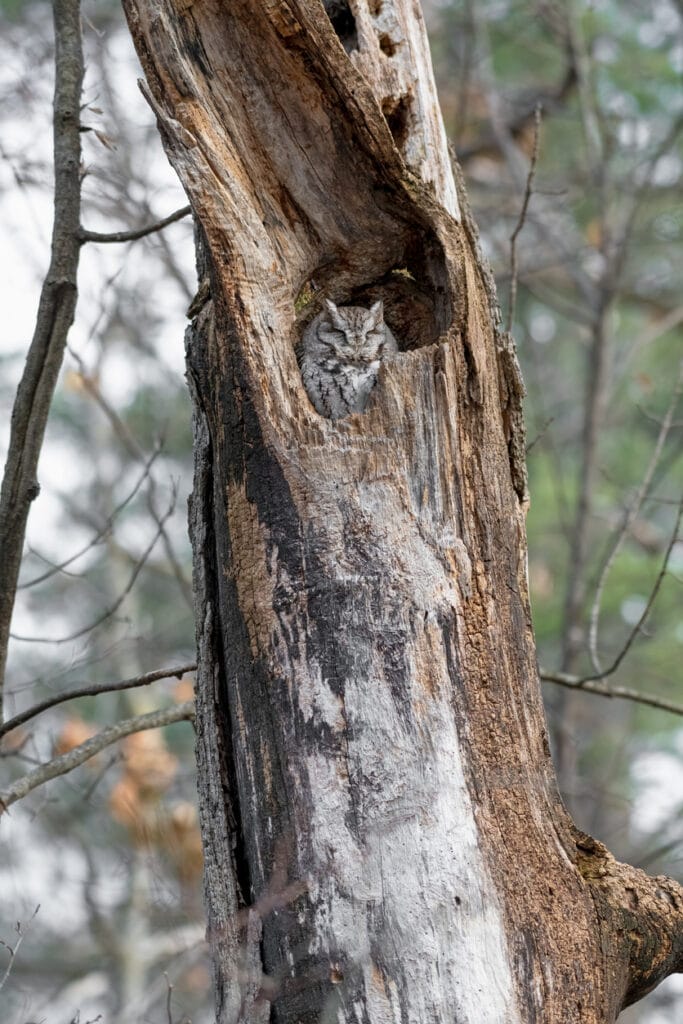
- Scientific name: Megascops asio
- Length: 6 to 10 inches
- Wingspan: 19 to 25 inches
- Weight: 5 to 5.60 ounces
- Lifespan: 8 to 10 years (wild); 14 years (oldest recorded)
Eastern Screech-Owls live in Missouri year-round, but they’re so elusive that they’re rarely seen. Thanks to their superior camouflage, they’re perfectly hidden among trees and shrubbery.
Like Northern Saw-whet Owls, Eastern Screech-Owls are small in size. They’re no bigger than adult-sized Mockingbirds and can easily fit the palm of your hand.
Eastern Screech-Owls have yellow eyes, prominent ear tufts that are sometimes lowered, stocky bodies, and no necks. They appear in three color morphs: brown, gray, and red. The red morph is the least common in the state, while the brown morph is the most common.
Author Note: They can be compared to Western Screech-Owls, which are similar in appearance but larger in size.
Despite the name, the calls of Eastern Screech-Owls are rarely described as “screech.” Instead, they produce a quavering, whistled call with ascending pitch, or a monotone trill usually sung with their mate.
Since they’re so small, their food is limited to smaller prey. This includes insects such as grasshoppers, moths, and beetles, as well as rodents like mice, moles, and shrews. They also eat frogs, fish, and small birds from time to time.
7. Snowy Owl

- Scientific name: Bubo scandiacus
- Length: 21 to 25.5 inches
- Wingspan: 48 to 59 inches
- Weight: 40 to 70 ounces
- Lifespan: 10 (wild); 23 years (oldest recorded)
Snowy Owls are rare, sporadic winter visitors of Missouri. They arrived in “noticeable numbers” during the winters of 2011-2012 and 2017-2018. They’ve visited Missouri in 2021, but only in small groups. Populations peak about every four years due to the drastic decline of lemmings.
These gorgeous owls are predominantly white in color, sporting big yellow eyes and tuft-less round heads. They’re just as large and sometimes even larger than Great Horned Owls, which earned them the nickname, “Great White Owls.”
They’re also sometimes called “Arctic Owls” because they mostly live in the Arctic tundra and the far north regions around the North Pole.
Snowy Owls are among the few species of owls that are diurnal. Although they mostly hunt at night, they’d sometimes take advantage of daylight hours to hunt for prey.
If you’re lucky enough to spot Snowy Owls while in Missouri, make sure to keep your distance. Snowy Owls can be aggressive when defending their territory.
In fact, they’re dubbed by National Geographic as “Alaska’s Deadliest,” as they’re known to attack Arctic Wolves that come too close.
8. Barred Owl

- Scientific name: Strix varia
- Length: 15 to 25 inches
- Weight: 26 to 30 ounces
- Wingspan: 35 to 50 inches
- Lifespan: 8 years (wild); 24 years (oldest recorded)
Barred Owls are another year-round resident of Missouri. They’re typically found in the state’s large deciduous and evergreen forests, as well as woodlands, wooded swamps, and wooded river bottoms.
Named for their barred plumage, which alternates between horizontal stripes of light brown and dark brown, these nocturnal birds have a “traditional” owl look: black eyes, tuftless round heads, disk-shaped faces, and orange beaks.
They’re the only brown-streaked, dark-eyed owl in Missouri, with Barn Owls being the only other dark-eyed species of their kind.
Barred Owls are best known for their trademark “Who cooks for you? Who cooks for you all?” call. It’s so iconic that it’s almost always used in horror movies and TV series.
Top Tip: Their voice is ventriloquial, meaning it’s hard to locate. This technique not only confuses prey but also protects Barred Owls from predators.
Barred Owls aren’t usually bothered by predators because they’re fairly large in size. However, they have a bit of bad blood with Great Horned Owls.
Great Horned Owls would often “steal” their nesting spots and eat their eggs and babies. Instead of fighting them, Barred Owls would fly away to avoid conflict. But since they don’t migrate, they won’t venture more than six miles away from their original nesting spot.
Final Thoughts
We hope you enjoyed our guide on Missouri’s eight most common owl species!
Although they belong to the same family tree, each of the owls above has characteristics that make them unique.
Regardless of the species, owls play an important role in controlling pest and rodent populations, especially Barn Owls and Great Horned Owls.
If you want to attract an owl in your backyard, consider placing nest boxes in suitable habitats near your property. Who knows, you might attract a breeding pair or two!
FAQ
To find out where recent sightings of owls have been, try eBird. You can search for the latest sightings or particular species or what has been seen in a certain area.
Audubon recommend the following places to see the Short-eared Owl: Squaw Creek National Wildlife Refuge, Riverlands Migratory Bird Sanctuary/Melvin Price Locks and Dam, Mingo National Wildlife Refuge .
With so many places to see the Short-eared Owl, it must be the most common species in Missouri.




